Story highlights
First female flight attendant started work in San Francisco in 1930
Designers from Christian Dior to Vivienne Westwood have created uniforms
San Francisco International Airport hosts new 70-piece exhibition
From runway chic to psychedelic space cadet, flight attendants have worn a staggering variety of outfits in nearly nine decades in the air.
Uniforms were mandatory from the get-go, with the first flight attendants in the 1930s wearing reassuringly nurse-like kit to inspire confidence in plane passengers.
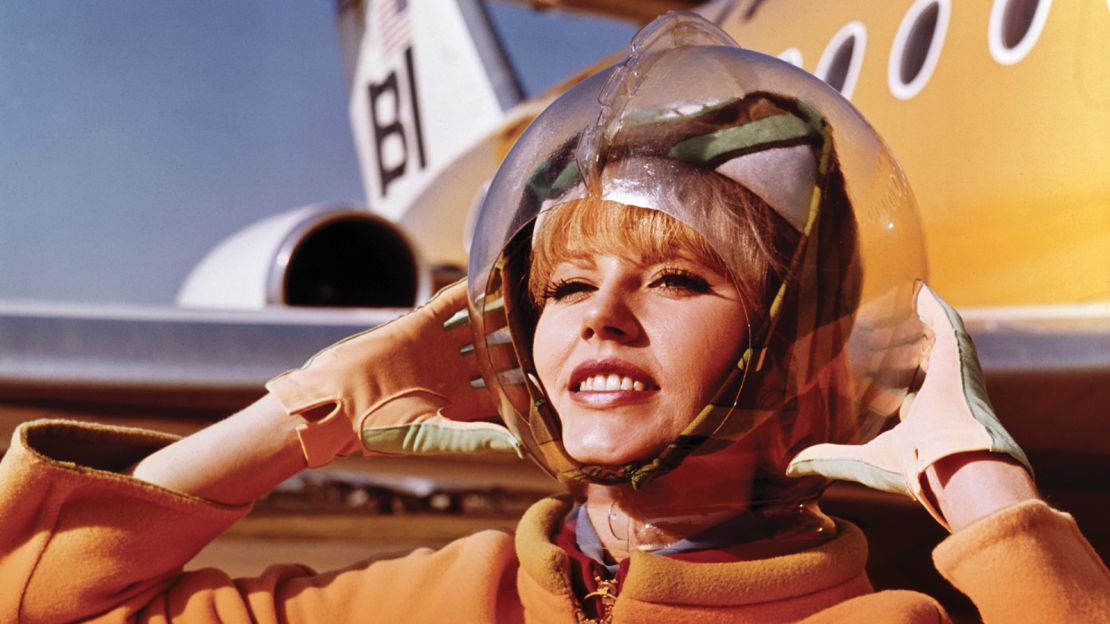
Since then, uniforms over the years have woven together aviation history and vintage fashion, with female attendants regularly being at the forefront of popular imagination.
Some uniforms were impractical, but memorable – such as one airline that had its hostesses wear bright, candy-colored coats with bubble space helmets.
The problem was, they took up a lot of space in the overhead bins.
Other uniforms have a sharp, ageless style that wouldn’t look out of place on the runway today.
The SFO Museum at San Francisco International Airport’s new “Fashion in Flight” exhibition features 70 women’s uniforms from 1930 to the present day and features work by designers including Christian Dior, Yves Saint Laurent and Ralph Lauren.
The pieces are on display throughout the International Terminal.
MORE: Airline cabins of the future: A new golden age of travel?
Ellen Church, the godmother of cabin crew
San Francisco was the logical place to host the show, because the world’s first female flight attendant, Ellen Church, was hired in the city in 1930.
Church was a pilot and registered nurse. Boeing Air Transport (now defunct) wouldn’t hire her as a pilot, but she did manage to persuade them that nurses could reassure passengers and attend to their needs if health issues occurred in flight.
“The uniforms have many demands on them,” says John Hill, assistant director at SFO Museum, who curated the exhibit.
“It needs to have function, project an authority and identity while coupling it with fashion trends. It has to be current, appealing and eye-catching.
“It’s a tremendous challenge and there are some brilliant successes.”
Here are some of the pieces on show at the SFO Museum, worn by the women who followed in Ellen Church’s footsteps. Most of the pieces are from U.S. airlines.
1930
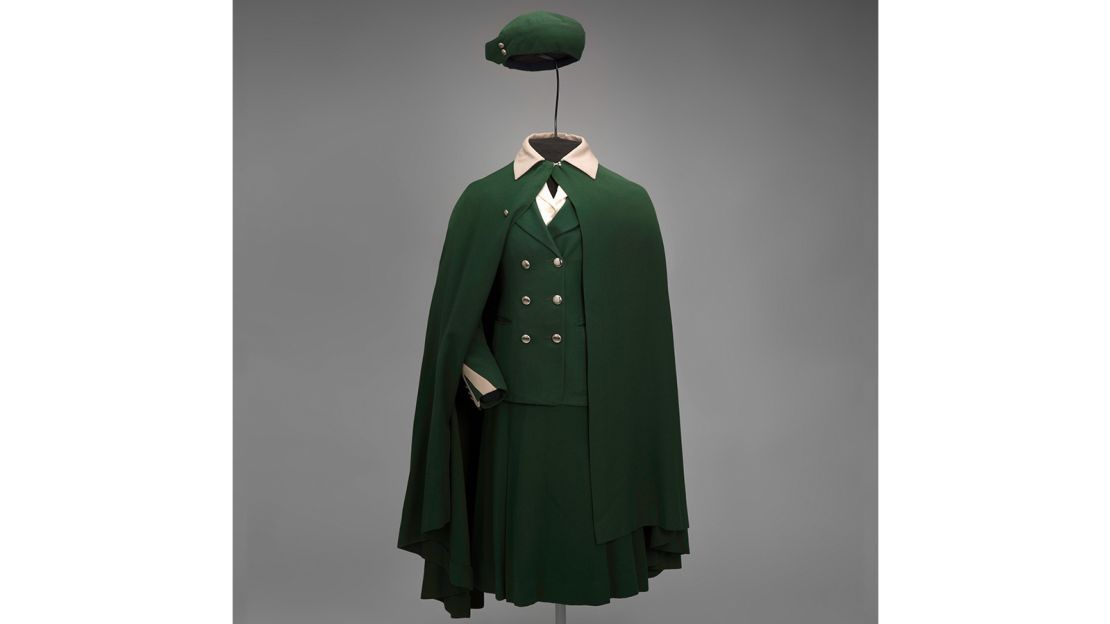
Boeing Air Transport – later United Airlines – was the first airline to have female flight attendants (the first male attendant was Heinrich Kubis, who began serving on German airships in 1912).
The uniform came in dark green wool with a heavy cape and cap. It might look like a cross between Florence Nightingale and Peter Pan – but perhaps that’s fitting to the attendant’s role as a nurse figure gifted with the power of flight.
Attendants wore block-heel Oxford brogues for stability, and with planes having to make landings to refuel, those capes helped keep them warm during pit stops.
1939

As more flight attendants were hired by more airlines, their uniforms evolved.
In 1939, United Airlines departed from masculine, serious suits to a more sunny, cheerful look.
The uniform matched the color of the airline with a clean short-sleeve dress in white crepe and a navy wool jacket with puffed shoulders.
The above outfits were used for the airline’s Douglas DC-3 service.
MORE: 5 cool planes you might find yourself traveling on soon
1944: Howard Greer
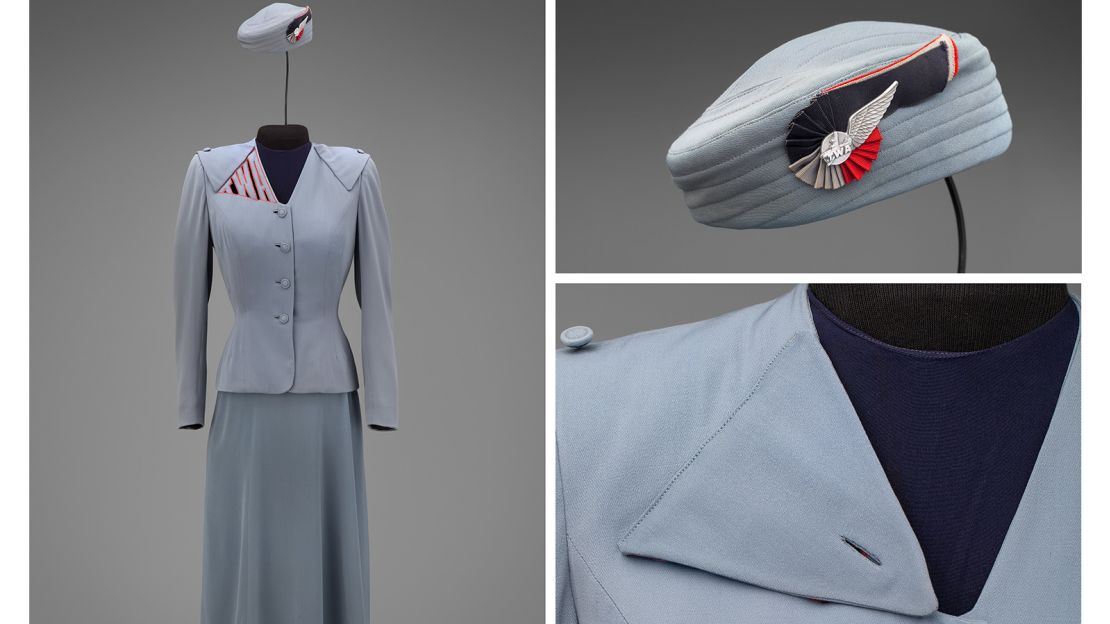
With World War II efforts under way, austerity affected the garment industry.
With less fabric available, outfits became more streamlined.
Designers opted for slimmer silhouettes, and the attire became decidedly more military in style.
1959: Don Loper
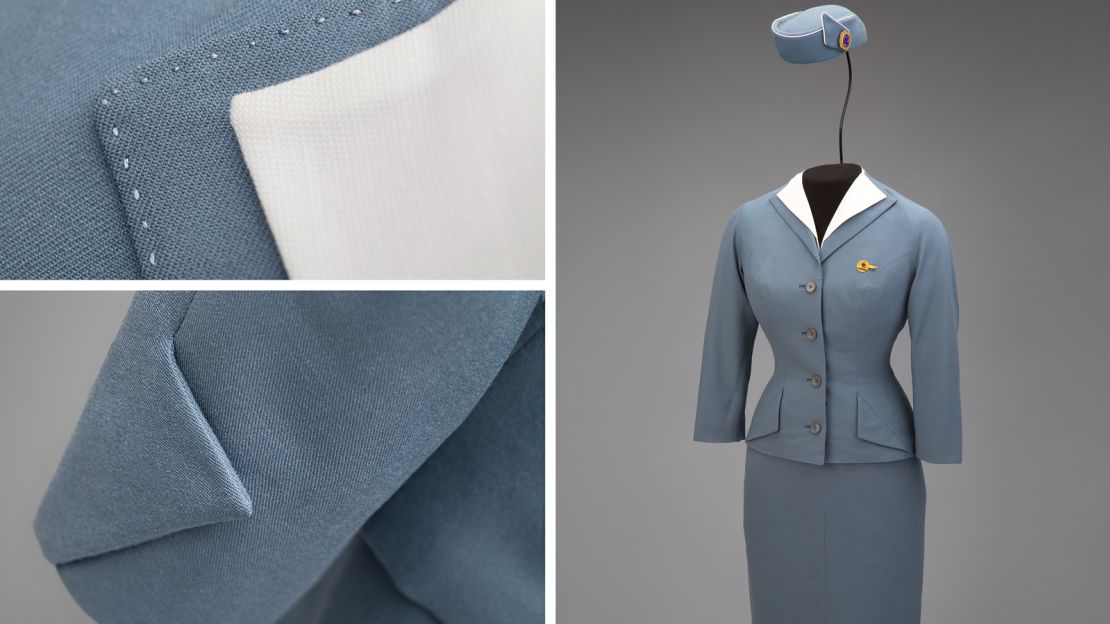
As flight became more accessible for more people, the uniforms began to take on a more cheerful tone.
To celebrate flight, the Pan Am attendant uniform mimicked the shape of the jet.
This suit in Tunis blue has flares on the cuff, an angular cut and a fin motif, all in homage to the Jet Age.
1965: Emilio Pucci
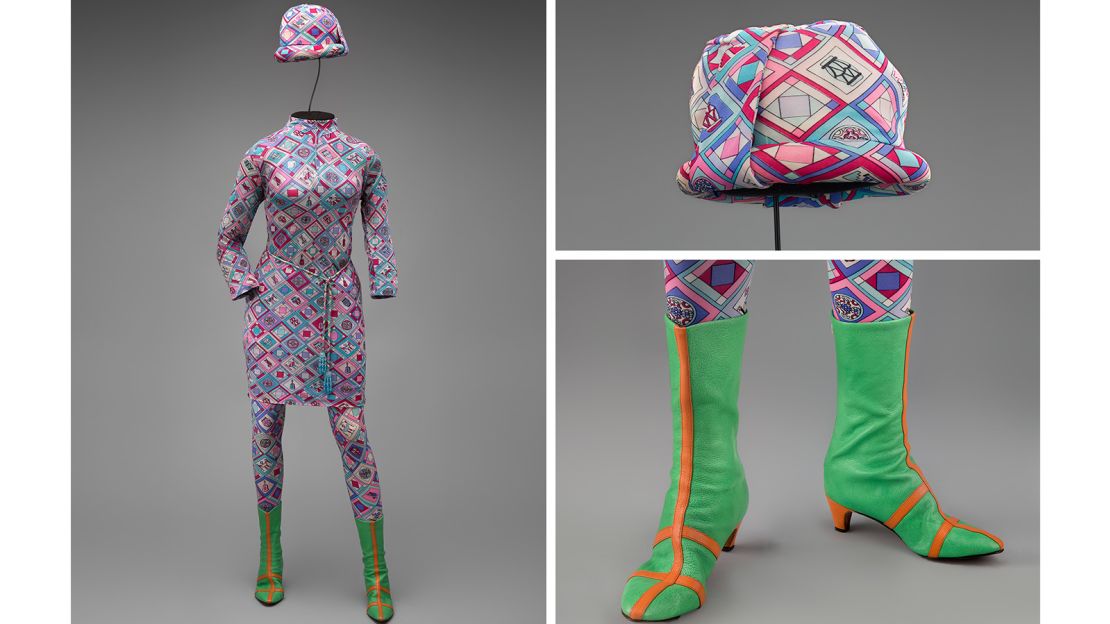
As the free-wheeling 1960s rolled in, some airlines began doing away with the traditional suits.
In a bold move, now-defunct Braniff International Airways hired Italian designer Emilio Pucci to reimagine its stewardess outfits. In came bold prints, pastels and bursts of color that jolted the airline industry.
Attendants wore bright green, striped calfskin boots, mini dresses, smocks, palazzo pants and nylon jerseys.
They were “non-uniform uniforms” but reflective of Braniff Airways’ brand identity.
One of the most outlandish looks was a space bubble helmet that hostesses wore over their heads as passengers boarded the flight.
The helmets were not worn during flight, and they were inconvenient to store. But the Florentine designer was tipping his hat to the space age.
MORE: Clip-Air: How pod planes could change travel forever
1969: Cristobal Balenciaga
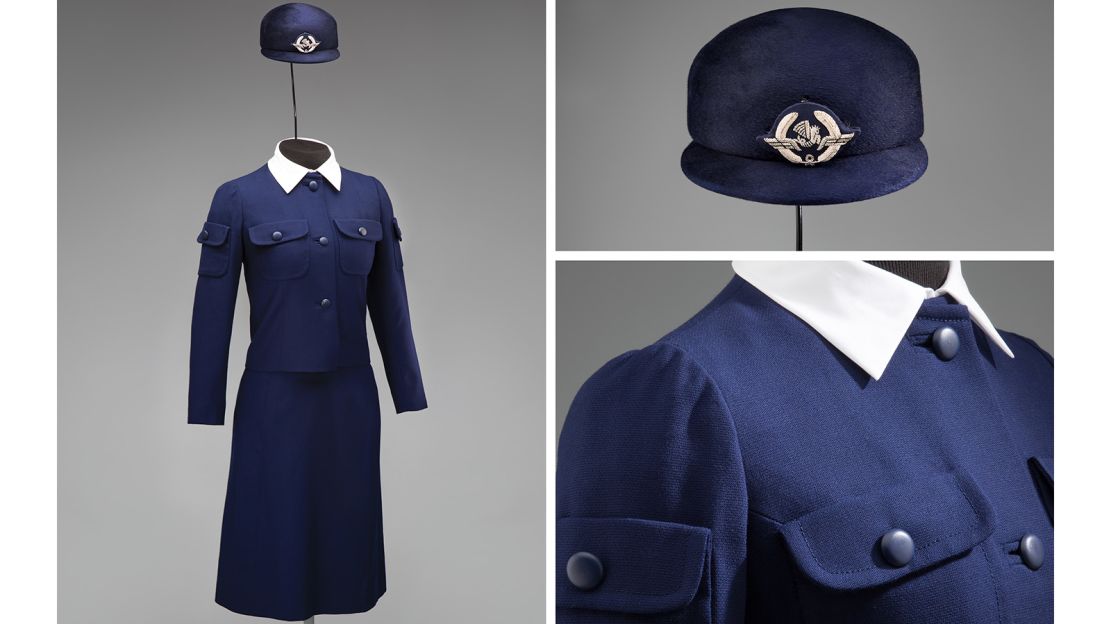
Fashion designer Cristobal Balenciaga demanded perfection when he partnered with Air France in the late ’60s.
He wanted individual fittings because he didn’t want to see ill-fitting uniforms, says SFO’s John Hill.
The result was this bespoke, navy winter suit in woolen serge with flap pockets and a riding hat.
1970: Hanae Mori
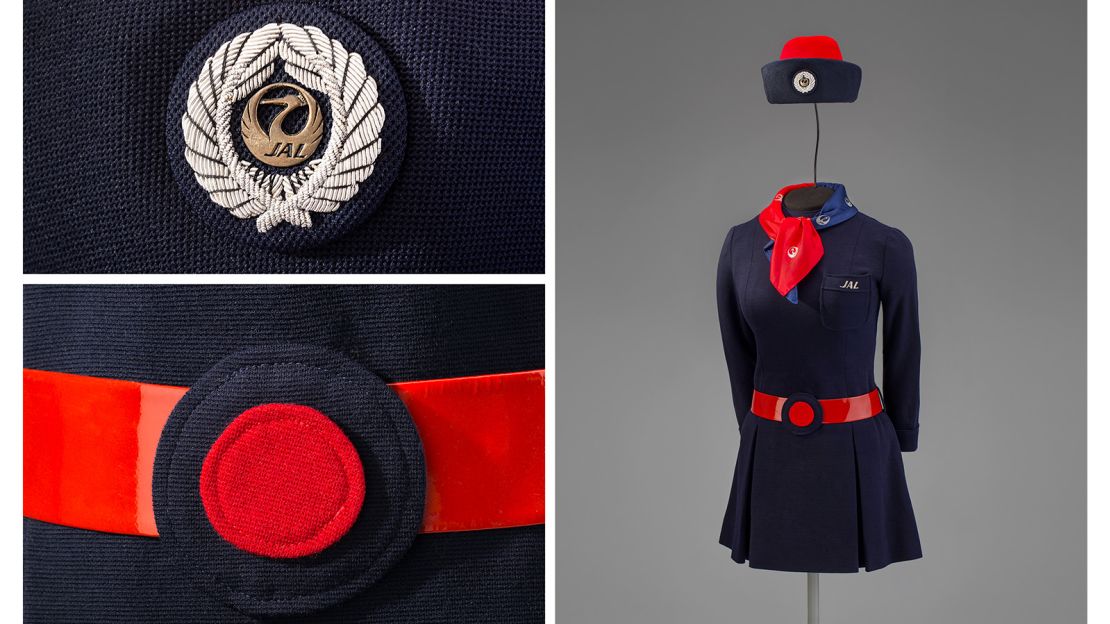
1970 was the time of micro-mini skirts and laid-back California cool.
This uniform designed by Japan’s Hanae Mori for Japan Air celebrated national symbols in both the red belt buckle – the rising sun – as well as a crane motif on the hat.
The dark blue polyester knit dress was a departure from JAL’s earlier uniforms and yes, they’re shorter.
1980: Yves Saint Laurent
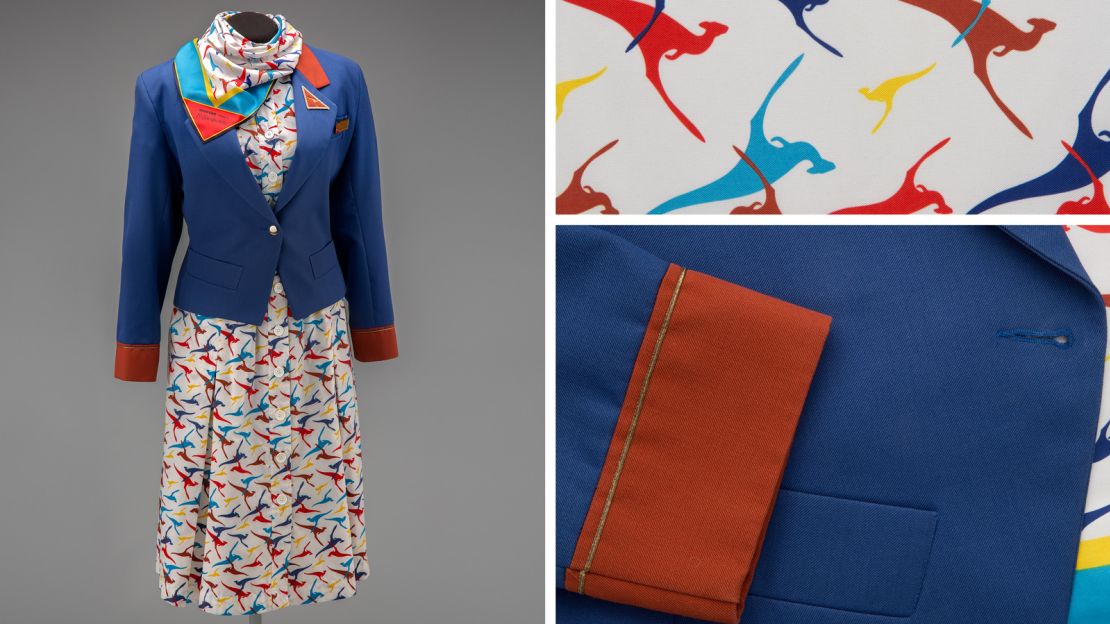
Welcome to the era of “Dynasty” and shoulder pads.
This Qantas Airways uniform, designed by Yves Saint Laurent, featured a distinctive kangaroo pattern that could not be mistaken for any other airline.
The cropped jacket and giant shoulders make for a classic 1980s power suit.
1990: Eastern Air Lines
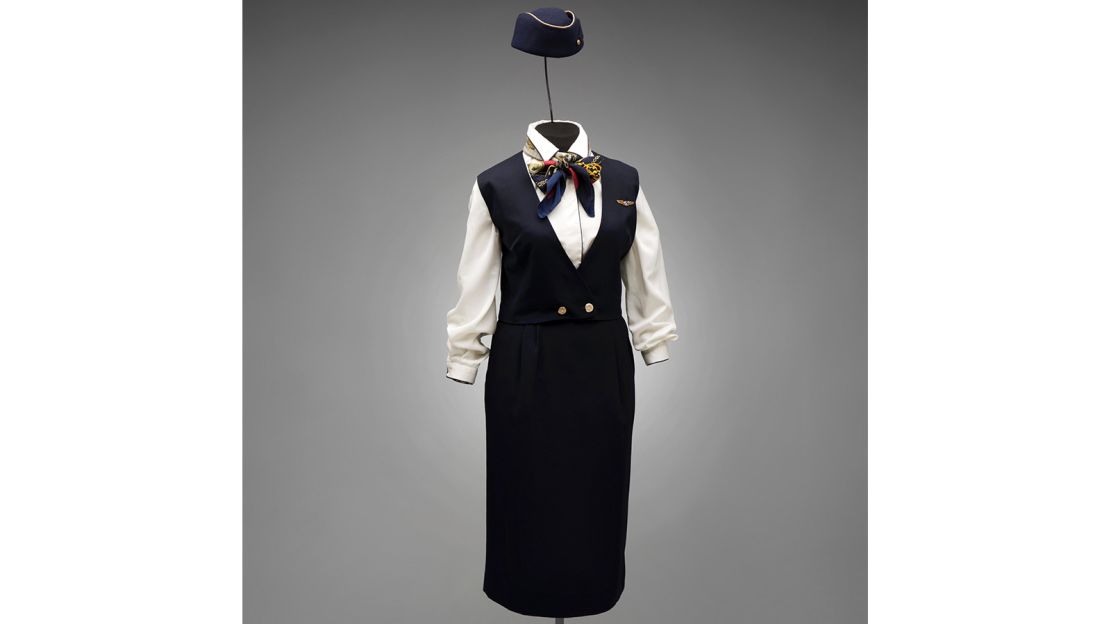
This look just screams uniform.
Eastern Air Lines (no longer in service) celebrated traditionalism in this design and brought back a retro hat invoking the golden age of air travel.
2000: Christian Lacroix
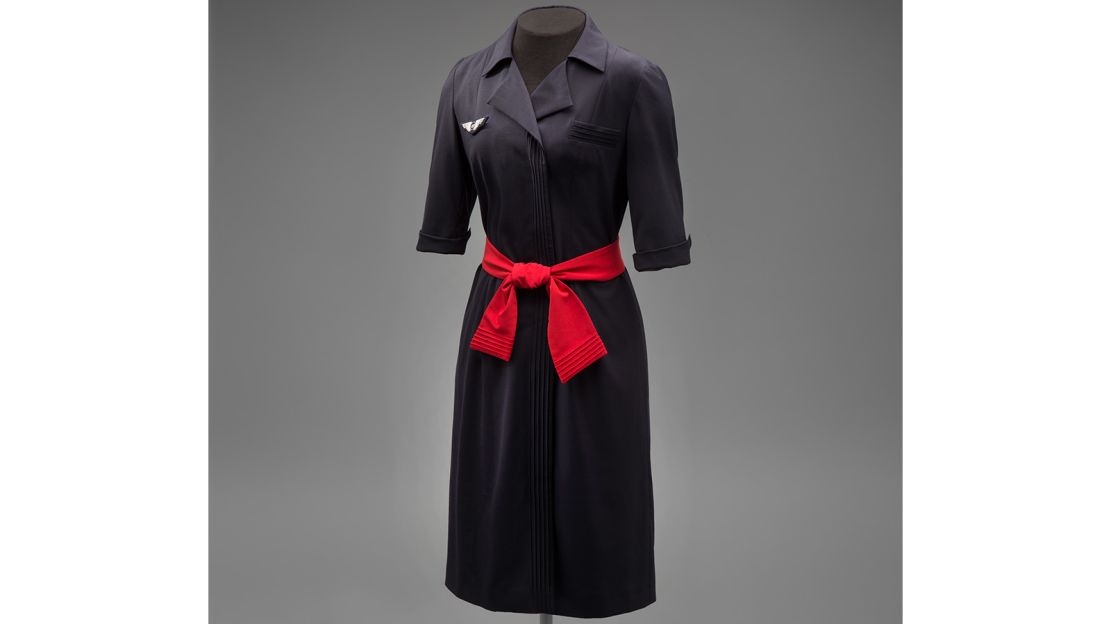
Christian Lacroix joined the long line of famous French designers including Pierre Cardin, Hermes and Dior who’ve created uniforms for France’s national carrier, Air France.
The atelier designed over 100 pieces for the airline including this robe-style, wool-blend dress that was both chic and comfortable and came in navy and blue-gray.
2014: Vivienne Westwood
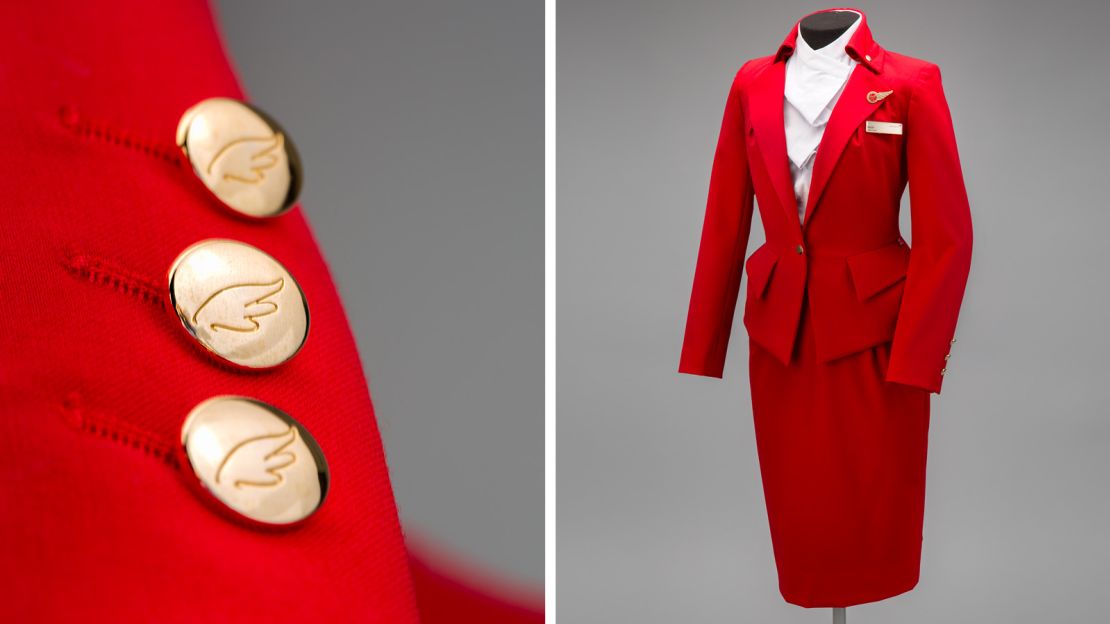
In a world of muted uniforms, Virgin Atlantic’s electric red uniform stands out.
Designed by Vivienne Westwood, the uniform has angular details and a jacquard blouse with a high collar and asymmetric frills. Even the buttons have small wings.
You can still see Virgin Atlantic attendants rock this outfit today.
The SFO Museum’s “Fashion in Flight” exhibition runs until January 8, 2017.
MORE: ‘Mad Men’ meets Airplane!’: Vintage photos show aviation’s golden age


















